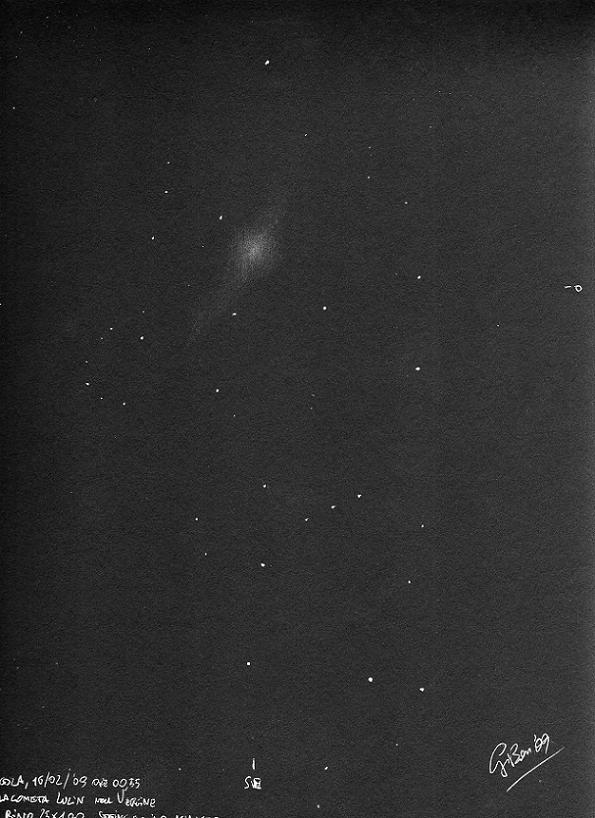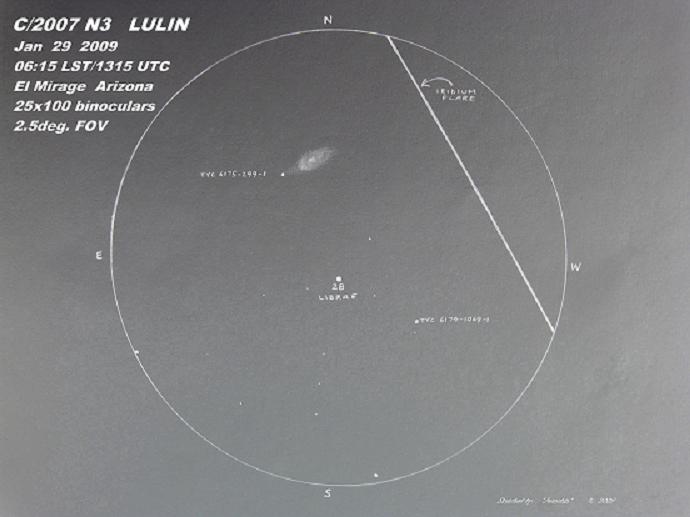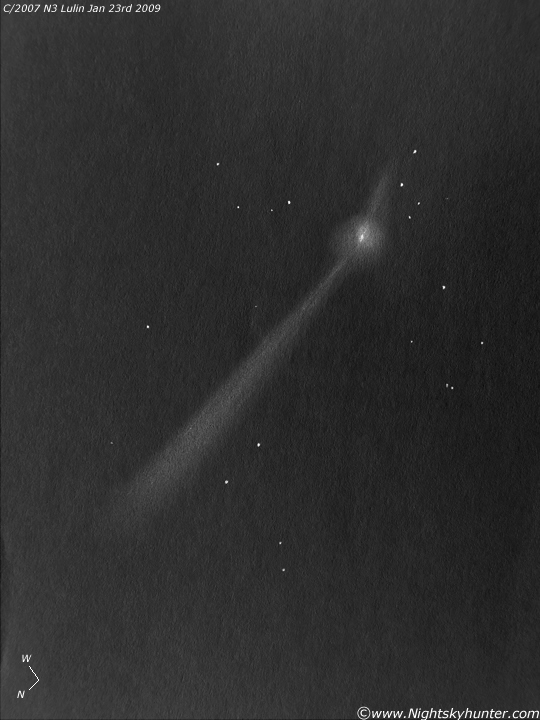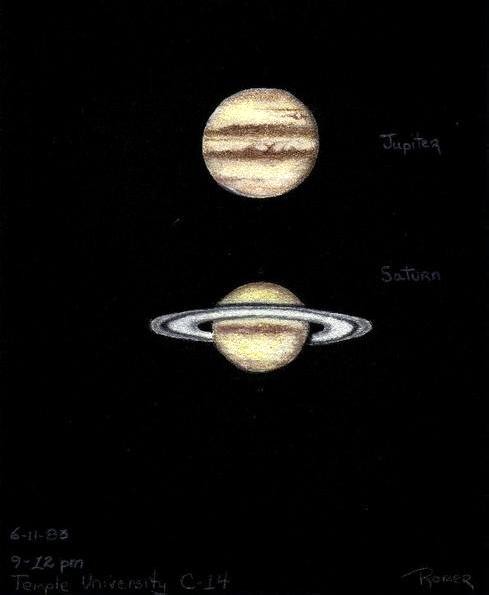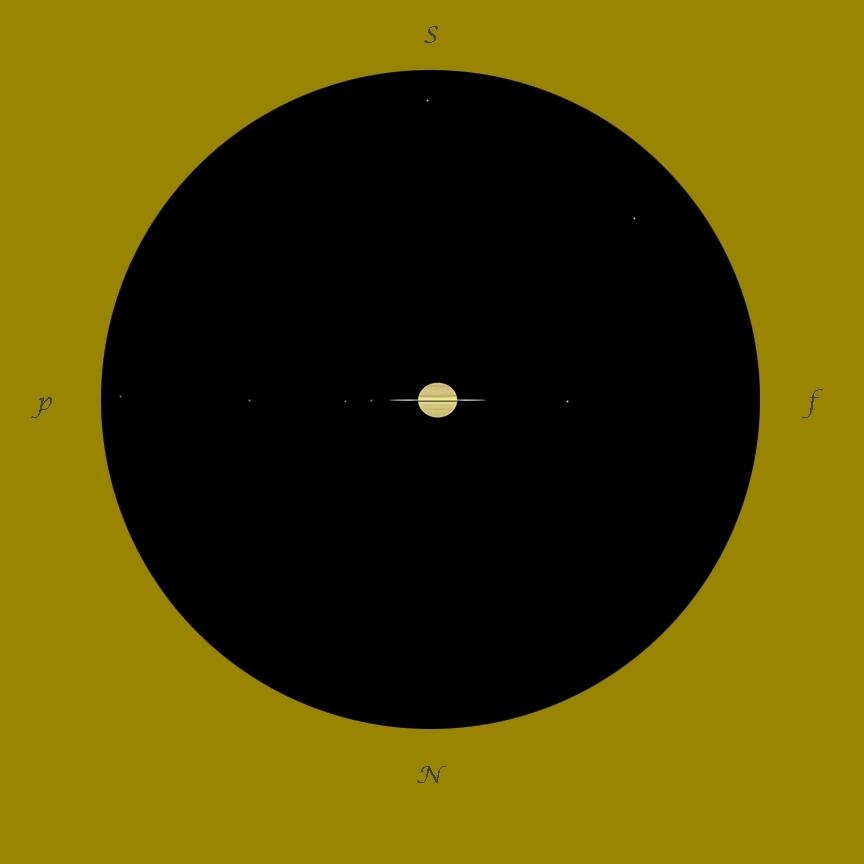
Saturn with moons at the beginning of 2009
Sketch and Details by Carlos E. Hernandez
I made an observation of Saturn on the first day of the new year (January 1, 2009) at 07:30 U.T. using my 9-inch (23-cm) F/13.5 Maksutov-Cassegrain at 163x and 344x under clear and steady seeing conditions (S: 7/10, T: 5/6). It was exciting and strange to observe the ringed planet with such thin rings.
My wide field observation made at 163x depicts Saturn at the center with five satellites visible. The satellites, from following to proceeding, are Titan (8.4m), Enceladus (11.7m), Dione (10.4m), Rhea (9.8m), and Iapetus (11.1m).
A digital observation made using Photoshop CS3.
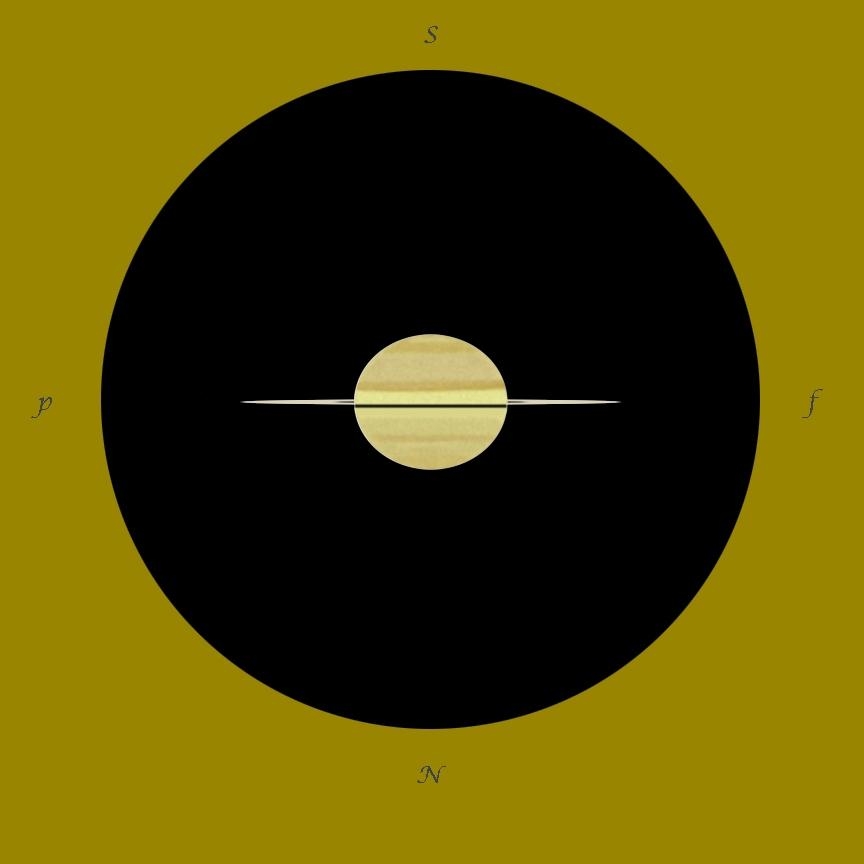
Saturn at the beginning of 2009 under higher magnification
Sketch and Details by Carlos E. Hernandez
At a higher magnification (344x) Saturn exhibited detail over its globe. The following is a description of the visible regions of the planet;
South Polar Region (SPR) was dark to dusky (3-4/10) with a dark (3/10) central core.
South Temperate Zone (STZ) was shaded to bright (6-7/10) and mottled.
South Equatorial Belt (SEB) appeared dark to dusky (3-4/10) with a thin, bright (7/10) zone over its center.
Equatorial Zone (EZ) appeared bright (7/10) with no detail visible within.
Ring Shadow (RS) appeared very dark (2/10) and thin
North Tropical Zone (NTrZ) appeared shaded to bright (6-7/10).
North Equatorial Belt (NEB) appeared dusky (4/10) and thin.
North Temperate Zone (NTZ) appeared shaded (6/10)
North Polar Region (NPR) appeared dark to dusky (3-4/10)
The rings appeared dusky (4/10) without any detail visible over them.
A digital observation made using Photoshop CS3.
Carlos Hernandez
